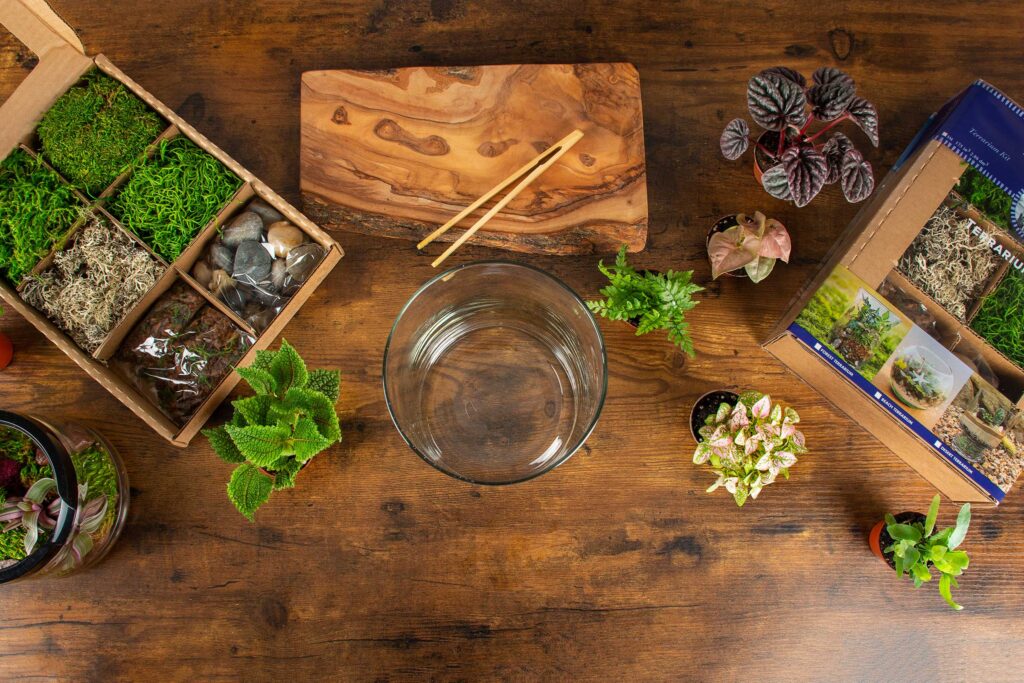Forest Terrarium Kit
Step into the enchanting world of forests right from the comfort of your home with a captivating forest terrarium filled with lush plants and ferns. These miniature woodland ecosystems transport you to a serene and verdant setting, offering a slice of nature’s tranquility within a glass enclosure. In this blog, we’ll delve into the art of crafting a mesmerizing forest terrarium and guide you through the process of bringing a touch of the wilderness into your living space.
Here’s what is included in your Kit:
- Mossy Fir Bark
- Sheet Moss
- Forest Moss
- Spanish Moss
- Deco Stones
- Lichen
Here’s what you need:
Selecting small plants and Ferns:
Pick a variety of small plants and ferns that are well-suited to the conditions within a terrarium. Look for compact and slow-growing species such as Baby’s Tears, Miniature Fittonias, Button Ferns, and Polka Dot Plants. These charming plants retain their small size while still exhibiting captivating foliage and textures.
Choosing the Right Container:
Select a clear glass container with a lid or an open-top vessel, resembling a miniature greenhouse. The transparency of the container allows you to appreciate the lush greenery and intricate details of the forest within.
Step 1: Pour in the Mossy Fir Bark.
Start by carefully pouring the Mossy Fir Bark into the terrarium, creating a layer that surrounds the base of your plant. The Mossy Fir Bark adds a touch of natural beauty and replicates the forest floor environment within your terrarium. Gently spread and position the bark pieces, ensuring they cover the soil surface and create a visually appealing texture. As you arrange the Mossy Fir Bark, consider creating small mounds or slopes to mimic the unevenness found in the forest. This will add depth and interest to your terrarium landscape.
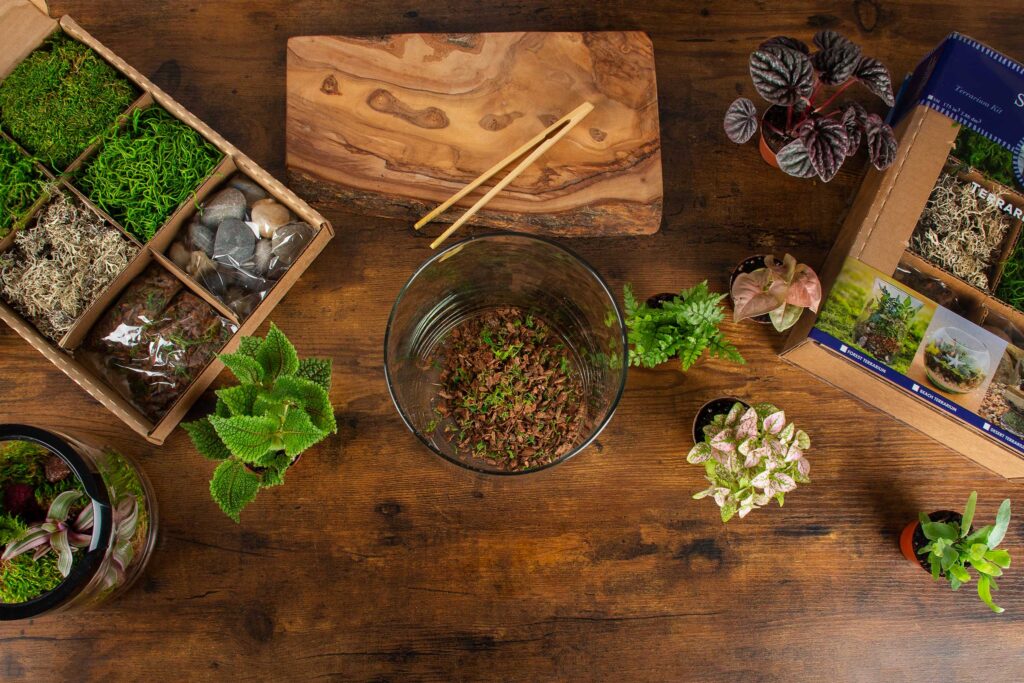
Step 2: Place your plants into your terrarium.
Carefully remove your plant from its nursery pot, taking care not to damage the roots. Create a small hole in the soil of your terrarium, ensuring it is deep enough to accommodate the plant’s roots comfortably. Gently lower the plant into the hole, making sure it stands upright.
Note: Add soil if necessary, most of the times your plants should come with enough soil.Note: Add soil if necessary, most of the times your plants should come with enough soil.


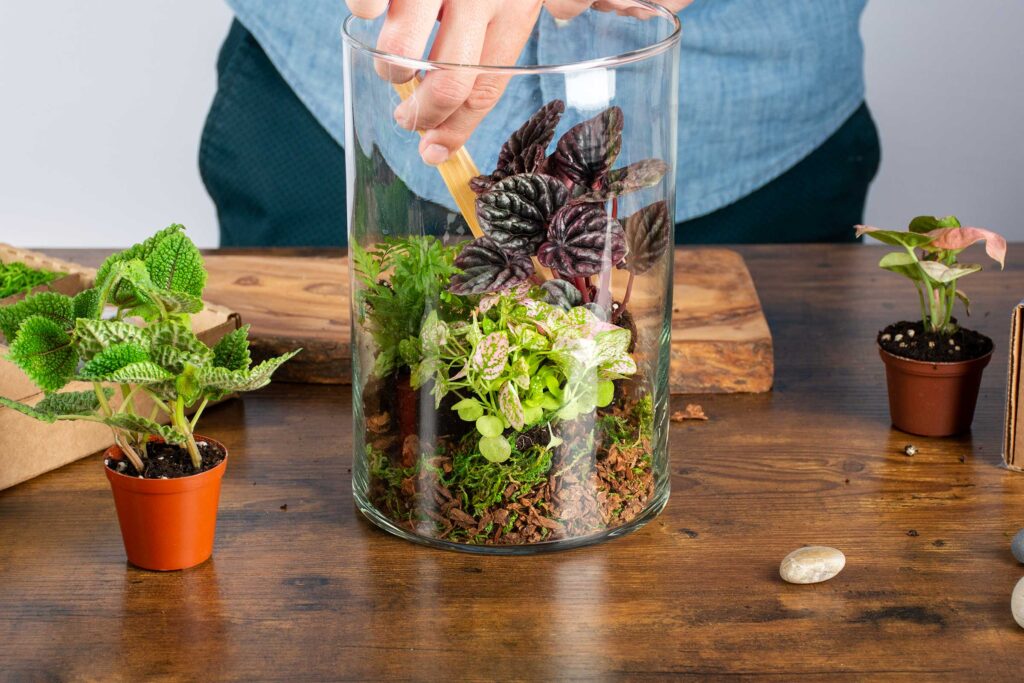
Step 3: Pull apart the Sheet Moss and place in the terrarium.
Take the sheet moss and gently separate it into smaller pieces, creating manageable sections that fit within your terrarium. Carefully arrange the sheet moss around the base of your plant, covering the soil and filling any gaps between the plants and the terrarium walls. Press the sheet moss lightly into the soil to secure it in place. Continue layering the sheet moss as desired, creating a lush carpet-like effect within your terrarium. The sheet moss not only adds a touch of natural beauty but also helps to retain moisture and create a humid microclimate for your plants.


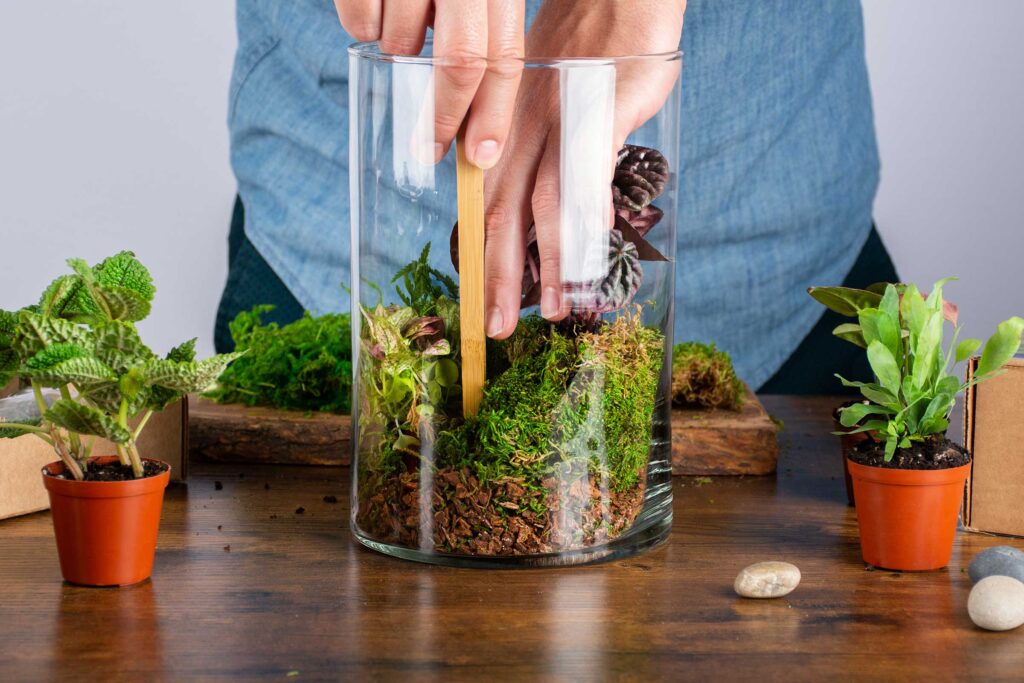
Step 4: Add the Forest Moss.
Adding forest moss to your terrarium will contribute to its lush and authentic forest ecosystem feel. The moss will add a touch of greenery, softness, and natural beauty to the overall composition. Gently separate the moss into smaller clumps or pieces, ensuring that the clumps are manageable for placement within the terrarium.

Step 5: Add some Spanish Moss.
Take handfuls of Spanish Moss and strategically place it within your terrarium to enhance the natural aesthetic. Spanish Moss is known for its delicate and trailing appearance, making it a perfect addition to create a sense of airiness and whimsy in your forest terrarium.
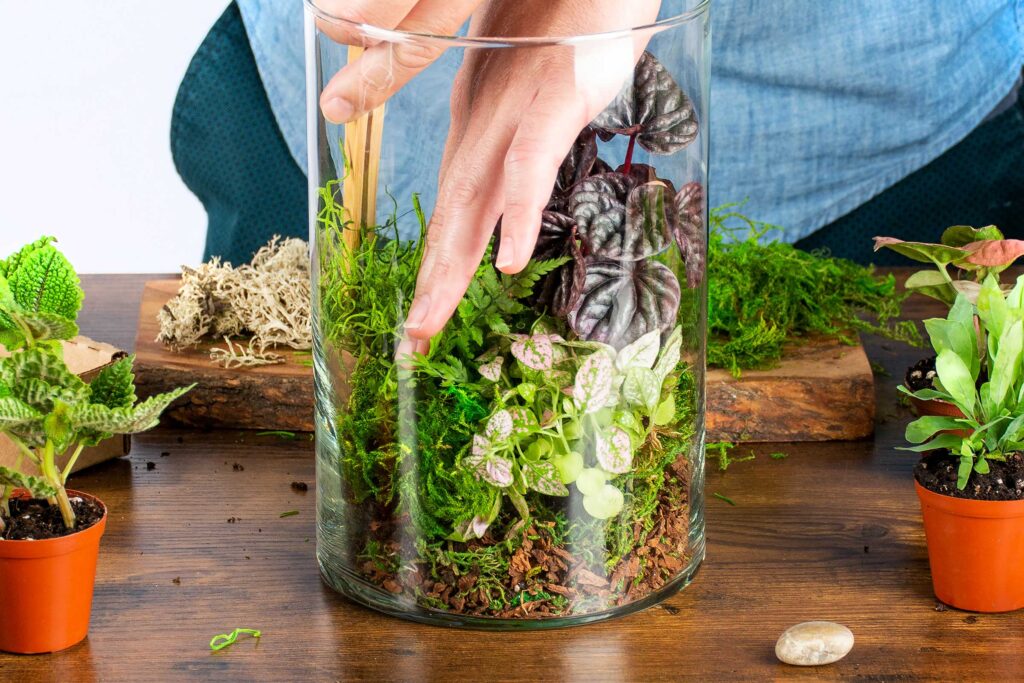
Step 6: Place a few clumps of the Natural Lichen in the terrarium.
Lichen, with its unique and intricate textures, adds a touch of authenticity and natural beauty to your miniature woodland. Consider placing some lichen clumps in crevices or nestled between plants to create a more organic and realistic appearance.

Step 7: Add the Decorative Stones
Place the decorative stones within the terrarium, distributing them strategically to create a harmonious balance. Consider positioning larger stones as focal points or to create a sense of structure, while smaller stones can be scattered throughout to add texture and depth.
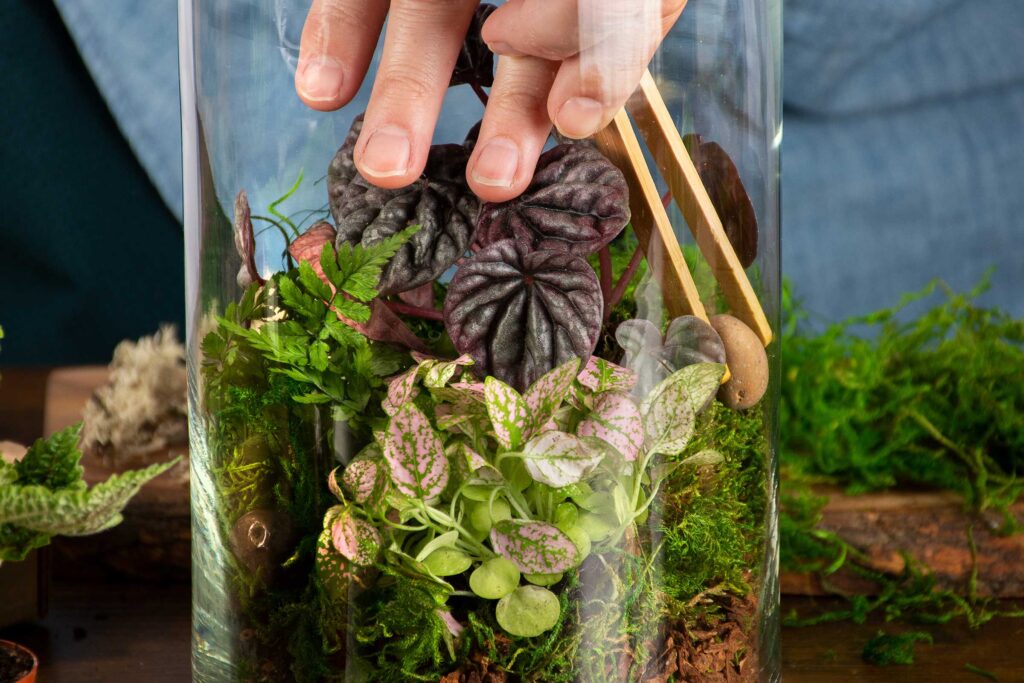
Pro Tip:
We always recommend using distilled water for your terrarium.
Tap water contains minerals that can accumulate over time, leaving behind mineral deposits on the terrarium’s glass walls, gravel, and plant leaves. They will make no harm to plants however they can leave white streaks on your glass vessel over time, which will not look good.
Keep the forest terrarium in a location with bright, indirect light, avoiding direct sunlight to prevent heat build-up. Mist the plants regularly to maintain a humid environment and monitor the moisture levels of the soil. Trim any yellow or decaying foliage to maintain the health and appearance of the plants and ferns.





